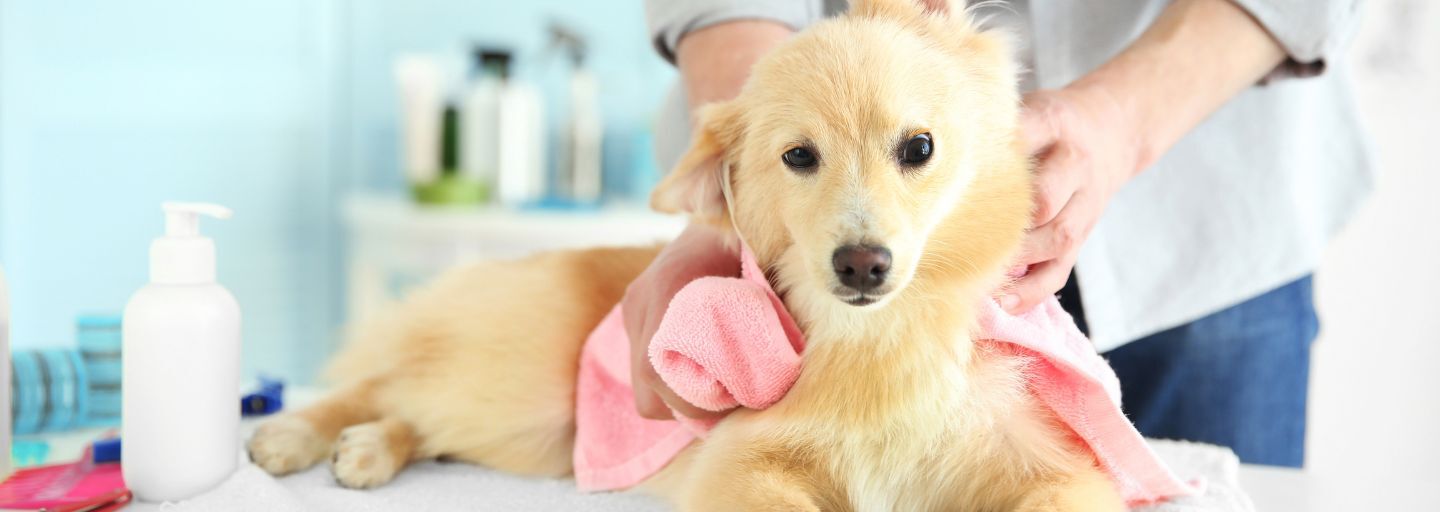While many pet owners turn their attention to fleas as the weather warms in spring and summer, effective flea control for dogs takes effort year-round. By maintaining consistent flea protection throughout the year, you will significantly help reduce the likelihood of a flea outbreak in your household when hot weather strikes.
Fleas love warm and humid weather; however, they can be a tough enemy to fight if their population has been left uninterrupted to slowly multiply throughout the winter months. That is why the best flea treatment for dogs is one that protects them and you all year round. Preventing fleas is more effective and easier than ridding your household of a flea infestation.
How do dogs get fleas?
Fleas are found on every continent of the world. In Australia, they are found throughout the country but are especially concentrated in the more humid areas around the coastline—exactly where a lot of our major cities are.
Fleas hide in dark, damp areas. When they sense the vibrations and warmth of a host animal nearby, they leap into their fur to live out the rest of their life feeding on their blood! So in short, dogs can pick up fleas anywhere outdoors, such as dog parks, bushwalks, backyards, and of course from other infected animals.
However, don't fall into the trap of thinking that there is no chance of infestation indoors. Fleas often hitch rides on intermediary carriers, so anything or anyone can unknowingly bring them into your home. Visiting infected pets, second-hand furniture, or your muddy shoes all have the potential to bring in fleas with them.
Once in your home, fleas multiply in your dog's fur, your carpet, bed sheets, cushions, soft furnishings, and even in house plants. Female adult fleas live and lay eggs on your pet. These eggs then fall off and remain protected in the dirt, cracks, and crevices of your house, in the pet's bedding, or in your carpet, where they hatch into larvae. The flea larvae feed on debris and develop into pupae, which can lay dormant for up to 3 months (that's the whole of winter!). Once the right environmental conditions appear, they hatch into new adults in as little as 19 days in warm and humid weather, and then start feeding and reproducing.
What are common dog flea symptoms?
The most obvious sign of fleas on dogs is the presence of the parasite in their fur. Adult fleas can be hard to spot without thorough inspection, so check your dog often for fleas. If you're new to pet ownership and wondering what fleas look like on dogs, look for a dark brown, roughly oval-shaped insect 1-2mm in size. They often congregate around your dog's head, neck, belly, and tail.
The best way to check for fleas is to comb through your pet's coat with a special Flea Control Comb that will catch adult fleas as well as 'flea dirt' (flea droppings) between its bristles. This will allow you to quickly identify an infestation in your dog. 'Flea dirt' or flea droppings are sometimes detected more easily than the fleas themselves and can be seen on the skin over the rump and back. Another way to check is to wipe the comb onto a moist paper towel—when wet, flea droppings turn red as they contain traces of blood ingested by the flea during feeding.
Along with finding fleas and flea droppings, other symptoms you may notice in your dog include:
- Scratching or biting at fur
- Inflammation (reddening of the skin)
- Dry, scruffy patches over the base of the tail
Serious flea infestations can also lead to further problems and symptoms such as:
- Tapeworm infection
- Pale gums, which can be a sign of anemia
How to treat fleas on dogs
If you find any signs of fleas, ticks, or worms in your pet, it's important to act quickly. These parasites can transmit diseases not only to pets in your household but also to humans. Flea treatment for dogs can seem a daunting task, so we've broken things down into three key steps below.
Step 1: Treating and preventing fleas
Firstly, it's important to treat your pets and their immediate environment all year round to prevent fleas in the first place. Just because you can't see the fleas doesn't mean they aren't there. PURINA TOTAL CARE provides flea treatment products in a number of oral or topical formulations available to control fleas on your dog:
- Total Care Flea Knockdown: for the treatment and prevention of flea infestations in dogs. The active ingredient in this product is Fipronil (a vet-grade active ingredient). Monthly application is recommended.
- Total Care Heartwormer, Allwormer & Flea Control: prevents heartworm infection and treats roundworm, whipworm, hookworm, and tapeworm. It also prevents and controls against flea infestations.
- Total Care Flea Shampoos: only will kill fleas on contact but have no residual effect.
- Total Care Flea & Tick Control: are 3-monthly treatments and are safe and very easy to use. They kill the larval stages in the pet's surroundings and also contain an insect growth regulator (IGR) to control all environmental life stages.
How often you should flea and worm a dog depends on the specific medication or treatment you're using. So be sure to check the product label and follow any instructions.
You can contact Purina's PetCare Advice Team, and they will recommend the best products for your pets' specific needs.
Step 2: Treating your pet's environment
It is imperative that you treat your household inside and out as the majority of the flea population (95%) exists as eggs, larvae, and pupae in the environment. This may include in the dirt, cracks, or crevices of your house, in your pet's bedding, or in your carpet.
Flea bombs, foggers, and mists for your house, which contain insect growth regulators (IGRs) and can provide up to 12 months of protection. These can be purchased from supermarkets.
Yard sprays or rinses can be applied to specific areas in the home and outside, including kennels, and most contain insect growth regulators. These can be purchased from many hardware stores.
Once treated, keep up a tight cleaning schedule and regularly vacuum all areas of the home, steam clean or vacuum carpets and upholstery, and wash and change pet bedding and blankets often.
Step 3: Continue to monitor year-round
Make sure to continually comb and check your pets for signs of fleas or ticks and visit your vet. Doing so will make sure you catch new fleas quickly, before they've had a chance to spread and infest.
Use with CARE
Some insecticides are poisons, and product labels must be strictly adhered to. Young, sick, pregnant, and nursing animals may be more sensitive to flea treatments, so please consult your veterinarian prior to using a flea treatment.
A word about ticks
Ticks are also a common parasite problem in dogs. Australia contains a large variety of tick species that are found all over the country, and particularly in long grasses and bushlands. Most ticks live in coastal areas with lots of humidity in the air. In many coastal cities, it's common to find ticks in backyards and gardens.
As with fleas, preventing tick bites is important. If you live in or take your dog to an area likely to have ticks, it's best to treat them with a preventative product first, such as Purina Total Care Flea and Tick Control. It's also important to check your dog regularly for ticks and ask your vet to teach you how to remove them.
Key Points to remember:
- Never use a dog flea product on a cat. Many flea products for dogs are toxic to cats, e.g., permethrin (check the label).
- Some products cannot be used in puppies or kittens under 3-4 months of age.
- Natural alternatives are available – they can still be toxic and may not be as effective.
- Remember to treat all pets in the household at the same time.
- Regular grooming and washing of your pet's bedding is also important.
- Your vet can help you plan the best control for your pet.







